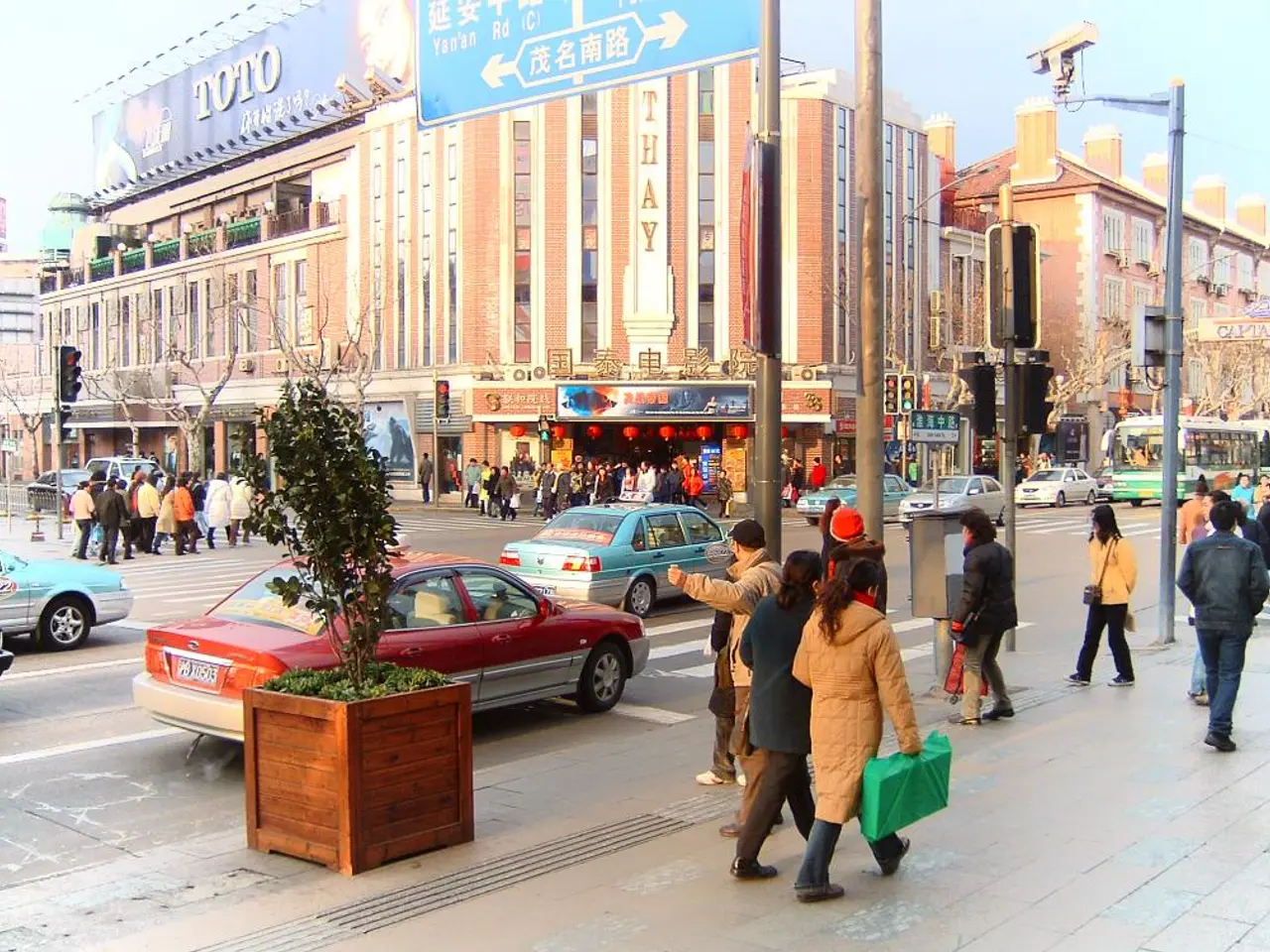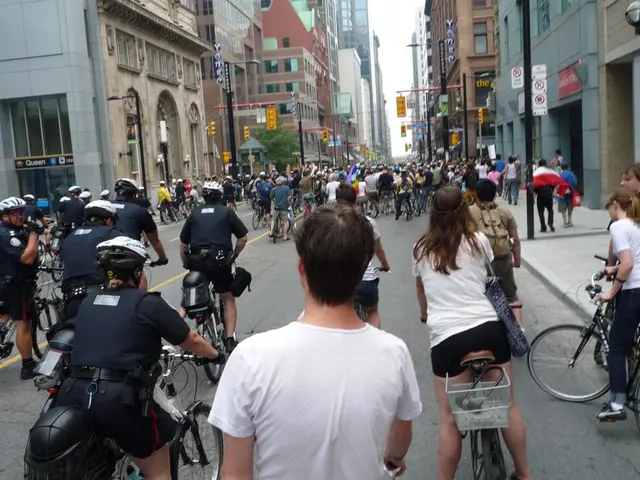People are walking faster and spending less time standing still, according to recent research findings.
In a groundbreaking study, a team of scholars from the Massachusetts Institute of Technology (MIT) have identified significant changes in pedestrian behavior and public space usage in three northeastern U.S. cities from 1980 to 2010[1][2]. The research, co-authored by Carlo Ratti, Fabio Duarte, and Arianna Salazar-Miranda among others, was published in the Proceedings of the National Academy of Sciences[3].
The study found that the average walking speed of pedestrians increased by 15 percent, while the number of people lingering in public spaces declined by 14 percent during this period[1][2]. The research team used computer vision and AI models to analyze footage from the 1980s and newly shot footage from the same locations in 2010[4].
One of the key findings was the decrease in group gatherings in public spaces. In 1980, 5.5 percent of individuals entering public spaces became part of a group, whereas in 2010, this figure dropped to 2 percent[1]. The increase in individual walking, with barely any change from 67 percent in 1980 to 68 percent in 2010, also stood out[1].
Carlo Ratti, a professor at MIT, noted that today's behavior in public spaces is heavily influenced by texting and communicating digitally before meeting in person[2]. He also observed that in Whyte's time, people in public spaces were more likely to look at each other, fostering conversations and chance encounters[2].
Ratti and his colleagues suggest that the decrease in group gatherings could be due to the proliferation of coffee shops and other indoor venues, which may have diverted social interactions away from public spaces[1]. They are currently conducting an extensive survey of European public spaces to shed more light on the interaction between people and the public forum[6].
The study, titled "Exploring the social life of urban spaces through AI," builds upon the work of William Whyte, a prominent social thinker who filmed footage in Boston, New York, and Philadelphia from 1978 through 1980[5]. The footage was archived by the Project for Public Spaces and later digitized by Keith N. Hampton and his students[4].
The findings of this research could help inform urban planning, encouraging the design of multifunctional public spaces that balance pedestrian flow with areas for lingering and social interaction[1][2][5]. Urban planners might also need to improve pedestrian infrastructure for efficiency and incorporate time-sensitive amenities to support brisk pedestrian traffic while providing options for resting or gathering to foster community engagement.
References: 1. Ratti, C., Salazar-Miranda, A., Duarte, F., et al. (2022). Exploring the social life of urban spaces through AI. Proceedings of the National Academy of Sciences. 2. Ratti, C. (2022, February 1). The changing dynamics of public spaces: A look back and forward. MIT News. 3. Proceedings of the National Academy of Sciences. (2022). Exploring the social life of urban spaces through AI. 4. Hampton, K. N., & Bettencourt, L. M. (2010). Urban Sociology for the 21st Century: The MIT Press Essential Knowledge Series. The MIT Press. 5. Whyte, W. H. (1980). The Social Life of Small Urban Spaces. Project for Public Spaces. 6. MIT Senseable City Lab. (n.d.). About. Retrieved from https://senseable.mit.edu/about/
- The research conducted by MIT scholars could potentially influence urban planning by designating more multifunctional public spaces that cater to both pedestrian flow and areas for social interaction, balancing efficiency with opportunities for community engagement.
- As part of their ongoing work, Carlo Ratti and his colleagues are conducting a survey of European public spaces to delve deeper into the interaction between people and public spaces.
- The study reveals a shift in lifestyle and social behavior over the years, with pedestrians spending less time lingering in public spaces and more time texting or communicating digitally before meeting in person.
- Beyond urban planning, the findings of this research could provide insights into the influence of home-and-garden spaces and lifestyle choices on public interactions, especially with the emerging trend of coffee shops and other indoor venues potentially diverting social interactions away from public spaces.




